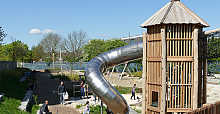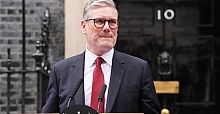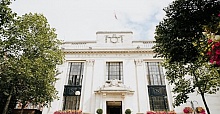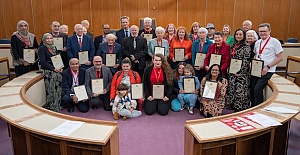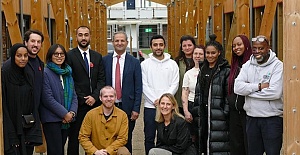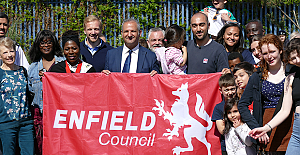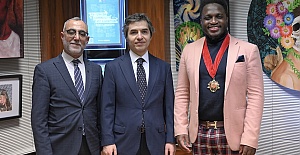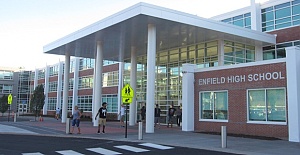Innovation responded to changes in working patterns as a result of the Covid pandemic, improving energy efficiency to save £182,400 in annual operating costs and cut 140 tonnes of carbon emissions - equivalent to about 20 car journeys around Earth.The technology is being rolled out across TfL’s office estate, with Pier Walk in North Greenwich already in its commissioning phase, and installations at offices in Victoria and Southwark underway.As London’s biggest user of electricity and one of the capital’s largest landowners, Transport for London (TfL) is pushing ahead with innovative measures to reduce its carbon footprint and improve green ways of working.A groundbreaking project that began at its Stratford office has seen smart sensor technology used to adjust ventilation, cooling and heating levels in real time based on the number of people in the building. As an early adopter of this technology, the initiative is now being extended to other sites across the TfL estate after a year-long pilot.
TfL is among the first few companies to use this on-demand energy innovation, which recognises the changes in working patterns after the pandemic and ensures TfL is being as energy efficient as possible. It is predicted this innovation will reduce the total energy used by 12 per cent at the Stratford office building, saving the equivalent of 140 tonnes of carbon dioxide emissions annually - which is about 20 car journeys around Earth - as well as £182,400 in annual operating costs of the building. In the long term, this will extend the lifetime use of building equipment and generate even greater savings with the reduced need for maintenance and repair.
TfL worked with smart tech provider LightFi to collect live, privacy-protected data on the number of people in the building, rather than generally ventilating the whole building during office hours. To determine the number of people in the building at any one time, five sensors were installed on each floor at the Stratford office to pick up secure Wi-Fi signals from mobile devices used in the building. Responding to real-time occupancy data, the central Air Handling Units (AHUs) within the building reacted to instructions to reduce air flow - and in turn, the electricity used for heating and cooling - while maintaining the quality of indoor air during periods of lower occupancy. The commissioning trial ran for a year to ensure the system was fit for different seasons. Additional wireless sensors monitoring levels of carbon dioxide, temperature and humidity in the building also ensured a comfortable working environment.
TfL Image - Endeavour Square office building (interior)
Download
As a result of the trial success, the same innovation has been introduced to the Pier Walk office in North Greenwich, with plans for installation at the Buckingham Palace Road office in Victoria and Palestra in Southwark to be completed in the first half of this year. Similar percentages of cost, carbon and energy savings are expected when this technology is installed at those buildings.
Lilli Matson, TfL’s Chief Safety Health & Environment Officer, said: “We’re pleased to be an early adopter of this smart innovation that we trialled at our Stratford office and are now extending to other buildings in our estate. It will help us to cut carbon emissions and save cost and energy without impacting operational performance and staff comfort. We are doing our part on our estate to help achieve the Mayor’s goal for London to be a net zero carbon city by 2030.”
Mete Coban, Deputy Mayor of London for Environment and Energy, said: “It’s great to see TfL leading the way in becoming more energy efficient, not only making the best use of their resources but also delivering real benefits for Londoners in terms of cutting carbon emissions. This kind of innovation is vital to meeting our environmental targets as we work together to build a greener and better London for everyone.”
Sarah Ratcliffe, Better Buildings Partnership’s Chief Executive Officer, said: “It is great to see TfL pioneering this innovative approach to improving the energy efficiency of their Stratford office, as well as their efforts to share the learnings for the benefit of the wider UK real estate industry. Projects like this are crucial to support commercial buildings to decarbonise effectively.”
For construction projects, TfL is taking an active approach to decarbonisation and recently signed up to the Construction Leadership Council's Five Client Carbon Commitments. TfL is already making progress to include low carbon requirements in its contracts, reducing carbon in major construction projects like Old Street, Neasden and Surrey Quays. TfL also continues to improve processes in early stages of construction and take a structured, phased approach to decarbonisation, including reducing the 25 per cent of embodied carbon emissions from steel and 20 per cent of the same from concrete materials on site, and working towards emission-free deliveries by 2030 and diesel-free sites by 2035.


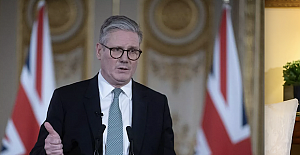 Prime Minister Keir Starmer's 2025 Easter message
Prime Minister Keir Starmer's 2025 Easter message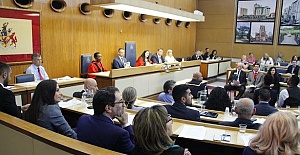 After Nesil Caliskan a by-election will be held in Jubilee ward in Enfield
After Nesil Caliskan a by-election will be held in Jubilee ward in Enfield Publishing the analysis, Labour’s Cllr Ergin Erbil said Everybody in Enfield deserves basic rights
Publishing the analysis, Labour’s Cllr Ergin Erbil said Everybody in Enfield deserves basic rights Gaza-Israel conflict Statement from Cllr Ergin Erbil, Leader of Enfield Council
Gaza-Israel conflict Statement from Cllr Ergin Erbil, Leader of Enfield Council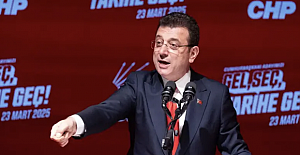 The European Union called on Turkey to uphold democratic values
The European Union called on Turkey to uphold democratic values Turkish citizens in London said Rights, Law, Justice
Turkish citizens in London said Rights, Law, Justice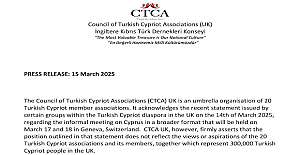 The Council of Turkish Cypriot Associations Geneva response letter
The Council of Turkish Cypriot Associations Geneva response letter Sustainable Development and ESG, Will This Become the Course for Turkic World
Sustainable Development and ESG, Will This Become the Course for Turkic World The 'Prince of Paris' has impressed in his first EuroLeague season
The 'Prince of Paris' has impressed in his first EuroLeague season Saran Media And Euroleague Basketball Extend Media Rights Partnership for Four More Years
Saran Media And Euroleague Basketball Extend Media Rights Partnership for Four More Years Will Rangers be Jose Mourinho’s next victim?
Will Rangers be Jose Mourinho’s next victim? Jose Mourinho's Fenerbahce face Rangers on Thursday
Jose Mourinho's Fenerbahce face Rangers on Thursday Barclays has become the biggest UK lender so far to cut mortgage rates
Barclays has become the biggest UK lender so far to cut mortgage rates THE SPRING STATEMENT EXPLAINED, UK ECONOMIC OUTLOOK AND GROWTH FORECASTS
THE SPRING STATEMENT EXPLAINED, UK ECONOMIC OUTLOOK AND GROWTH FORECASTS Launch of Made in Enfield gift shop to celebrate local artists and designers
Launch of Made in Enfield gift shop to celebrate local artists and designers Trial used smart Wi-Fi sensors for live building occupancy data to optimise
Trial used smart Wi-Fi sensors for live building occupancy data to optimise
